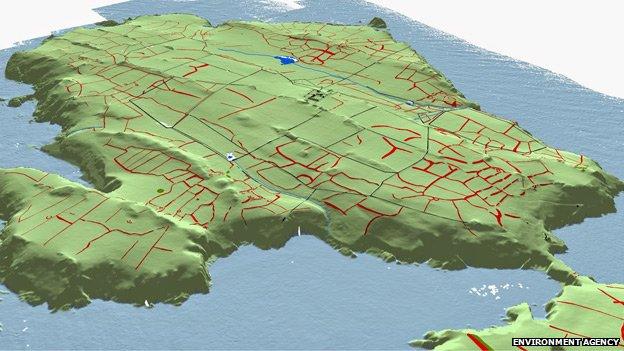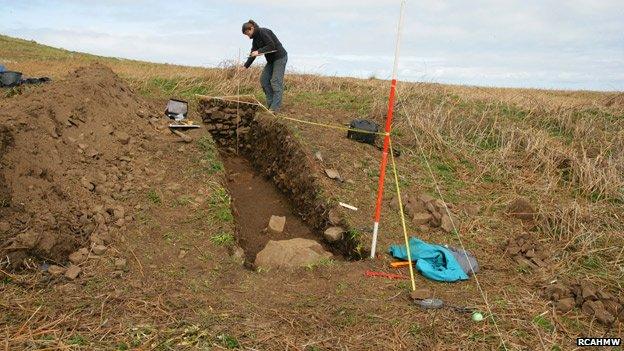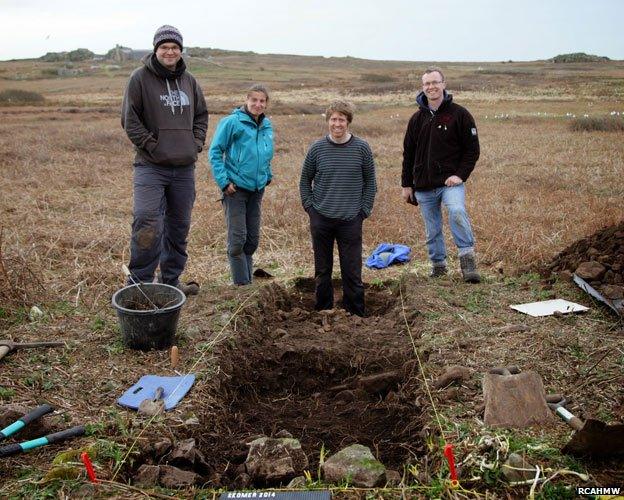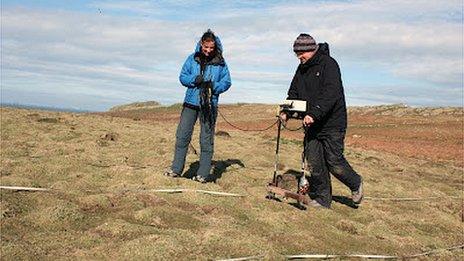Skomer Island excavation dates settlement to Iron Age
- Published

A geophysical survey of Skomer Island found previously unknown field systems and settlements
Prehistoric remains on Skomer Island date from at least the early Iron Age, say archaeologists.
Ancient settlements were found on the nature reserve off the Pembrokeshire coast using a number of techniques, including taking "X-rays" of the land.
Tests on a mound of stones used for cooking date one site to around 500 BC.
Experts from the Royal Commission on the Ancient and Historical Monuments of Wales (RCAHMW) said the island appears to have been "well settled and farmed".
Skomer, famed for its bird life and particularly its puffins, also has some of the best preserved prehistoric field systems and hut settlements anywhere in Britain.
A geophysical survey carried out in 2012 used technology to measure through the earth, creating an "X-ray" picture of what is under the ground.
It found that unrecorded prehistoric fields and settlements survive beneath the modern fields in the centre of the island.

The exposed stone wall of the Iron Age roundhouse can be seen at the end of the trench
In April 2014 a small team had permission to cut an excavation trench at a prehistoric mound of burnt and fire-cracked stones outside the remains of a roundhouse on north Skomer.
Such mounds are found at these dwellings as the stones were heated in a fire and then dropped in a trough of water to bring it to boil for cooking purposes.
Dr Toby Driver from the RCAHMW said: "Despite half a century of modern archaeological interest, we still had no scientific dates for the roundhouses and fields on Skomer.
"Our excavation discovered a cattle tooth from within the mound of stones, which has now been radiocarbon dated to the late Iron Age.
"Beneath the mound we found a sealed land surface containing Neolithic or Bronze Age worked flint tools.
"A second radiocarbon date from blackthorn charcoal in the upper soil layers gave an early Iron Age date."
The tests - dating the mound to between 520-458 BC - are accurate to within 62 years, he said.
Dr Driver added: "These new dates confirm pre-Roman settlement on Skomer.
"Even so, the burnt mound covers a substantial earlier field wall showing that the island was already well settled and farmed in previous centuries."

The Skomer Island Project team opened the first modern excavation trench in the island's history
- Published7 April 2012

- Published17 June 2010